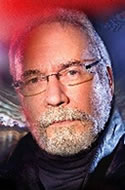Abstract
This article addresses the different perceptions that parents, students, and teachers have regarding appropriate accommodations for twice-exceptional students.
In order for gifted/learning disabled (GT/LD) students to effectively gain access to enriched and accelerated instruction, they often need to have appropriate adaptations and accommodations (Baum, 2004; Baum, 1991; Barton & Starnes, 1989; Cline & Schwartz, 1999; Weinfeld, Barnes-Robinson, Jeweler, Shevitz, 2002). Teachers, parents, and students have strong opinions and beliefs that influence which, if any, adaptations and accommodations they believe to be appropriate.
As a result of two decades of experience with GT/LD students, the authors recognized that there is a difference in perception regarding the appropriateness of adaptations and accommodations, as well as differing beliefs about whether these adaptations and accommodations enable or empower students. The authors came to believe that perceptions differed widely among parents, students, and special and general educators at varying grade levels.
Accepting the belief that attitudes are malleable was essential to the value of the informal study that follows and its implications for positively impacting instruction for GT/LD students. By collecting and analyzing data on attitudes toward appropriate adaptations and accommodations, the authors have developed guidelines for providing them to GT/LD students and action plans that empower these students to be successful learners.
Adaptations and Accommodations
When advocating for adaptations and accommodations, first, it is essential for educators, parents, and students to understand the differences between an adaptation and an accommodation. Wiggins and McTighe created a framework for planning units and lessons for mastery learning (Wiggins & McTighe, 1998) that helps to illustrate the basic tenants of appropriate adaptations and accommodations for GT/LD students. Their plan for any lesson or unit focuses on three important elements: 1) the enduring understanding which is the lasting idea or concept; 2) essential questions that guide the unit and focus teaching; and 3) key knowledge and skills that students must acquire by the end of the unit in order to demonstrate mastery of the standards and indicators addressed in the enduring understandings. While these three pieces remain the same for gifted students with disabilities as they are for other gifted students, it is the learning activities and assessments that may need to be adapted and/or accommodations provided for GT students with learning disabilities.
For example, in an elementary social studies lesson on how Native Americans adjusted to their environment, a teacher typically uses a learning activity of reading a textbook or some source material, and the assessment of having students write a multipage essay about the topic. The teacher could provide an adaptation to the learning activity for GT/LD students by allowing them to actually build a model of the cliff dwellings in which the Native Americans lived and then, from their research, describe the key points about that structure. Other options might include creating a dramatic reenactment or participating in a simulation of Native American life. There will be times, however, when the activity cannot be adapted or changed because gaining information from print material and producing a written document are, in and of themselves, goals of the lesson. In that case, accommodations will be necessary for those students who have a disability that affects their ability to read or write. Students who have a disability that affects their reading may be provided with books on tape, text to speech software or opportunities to hear a person read the information aloud. Students who have a disability that affects their writing may use graphic organizers, a word processor, word predictive software, organizational software and /or work with partners and dictate responses to them. Through the use of effective adaptations and accommodations, GT/LD students are able to achieve the same learning goals as non-disabled GT students.
Disagreement on the meaning and types of appropriate adaptations and accommodations for students is not only evident at the school level, but also at the state level. Looking at the state-by-state policies, there is little agreement regarding what accommodations are allowed. For example, extended time, the most frequently used accommodation, is allowed in 37 states, but five of those prohibit it under certain conditions and two states completely prohibit it. While nine states offer reading aloud with no restrictions and 23 states offer reading aloud with some restrictions, three states completely prohibit reading aloud as accommodations during assessments (Thurlow, House, Scott, Ysseldyke, 2000).
Although these policies relate to state regulations on formal assessments, they impact accommodations that are allowed for classroom instruction and assessments. As teachers prepare their students for mandated state assessments, they often allow the same accommodations in their classroom instruction that will be allowed in the mandated assessments (Weinfeld, Barnes-Robinson, Jeweler, Shevitz, IN PRESS).
The power of appropriate adaptations and accommodations for GT/LD students is illustrated in the following two profiles. One elementary school student received no accommodations.His teachers viewed him as bright, but inattentive and lazy. He was viewed by some of his classmates as "crazy" or "retarded." Each day, in elementary school, as his turn to read aloud approached, he went to the bathroom, where he got sick to his stomach and wished he would die. Unfortunately, when he returned to the room, it was always still his turn to read aloud. In sixth grade, when assigned a composition, he dictated an outstanding composition to his mother, because his poor handwriting and spelling interfered with his work production. He was accused of plagiarism and became so disconsolate he dropped out of school for a time. In contrast, one college student met with each of his professors prior to each semester. He described to them his love of literature and his passion for writing. He also described his need to take periodic breaks during class due to his ADHD, his need for copies of a peer's notes, his need to do all major writing on the word processor due to his written language disability, and his need to have books on tape because he read on a 7th grade level. The professors invariably agreed to work closely with him and allow all of the appropriate accommodations. He graduated from
Brown University with Honors and a 4.0 average (Mooney, 2000).
Both of these portraits are of Jonathan Mooney who explains his experiences in his book, Learning Outside the Lines (2000). Jonathan's experiences clearly exemplify the negative effects and problems that students face when adaptations and accommodations are not part of their instructional program. It affirms the impact and effects that positive beliefs and attitudes have on student selfesteem and performance.
Many researchers have studied the relationship between attitudes and behavior (e.g., Goodmonson & Glaudin, 1971; Ryan & Bonfield, 1975; Scheier, Buss & Buss, 1978; Seligman, Kriss, Darley, Fazio, Becker & Pryor, 1979; Wicklund, 1982; Janis, 1986; Wilson & Hodges, 1992). Cohen (1964) asserts that there is a "broad psychological assumption that since attitudes are evaluative pre-dispositions, they have consequences for the way people act toward others, for the programs they actually undertake, and for the manner in which they carry them out. Thus attitudes are seen as...determinants of how a person will actually behave..." (pp.137-138).
Assessing the attitudes of parents, students, and educators toward adaptations and accommodations became the first step to creating a plan to influence behaviors regarding the implementation of appropriate adaptations and accommodations for GT/LD students.
The Survey
Because differing attitudes and beliefs may impact the decisions that are made regarding the appropriate adaptations and accommodations for GT/LD students, the authors developed an attitudinal survey in order to substantiate the hypotheses that different groups, comprised of parents, students, general educators, and special educators, have distinctively different opinions about what constitutes appropriate adaptations and accommodations. As a result of analyzing the findings, guidelines and action plans for implementing appropriate adaptations and accommodations were created. Figure 1 gives the actual survey we used in the study. We have included it because it may be useful to you as you plan for your students needs.
Beliefs
The seventeen-question survey was developed, based on these positively stated beliefs regarding appropriate adaptations and accommodations. The survey was designed to incorporate the major issues that were addressed in the laws that relate to accommodations (Section 504; IDEA '97).
The survey was constructed on the following beliefs related to the use of appropriate adaptations and accommodations.
- Adaptations/accommodations are in the best interest of students.
- Adaptations/accommodations level the playing field.
- Adaptations/accommodations are aligned with student's disabilities and needs.
- Adaptations/accommodations allow students to participate more fully in assessments.
- Adaptations/accommodations allow students to better demonstrate their knowledge.
- Adaptations/accommodations are based on the needs of the individual student.
- Adaptations/accommodations allow students to move from dependence to independence.
- The amount of adaptat ions / accommodations students receive is adequate.
- Providing adaptations/accommodations does not compromise the teaching of the content material.
- Providing adaptations/accommodations does not compromise the assessment of students.
- Adequate information is communicated to all staff regarding students' disability and their resulting needs for adaptations/accommodations.
- Adaptations/accommodations are more empowering than enabling.
- The adaptations and accommodations that are found in a student's individual plan are usually appropriate.
. . . Continue to article and footnotes (PDF).











